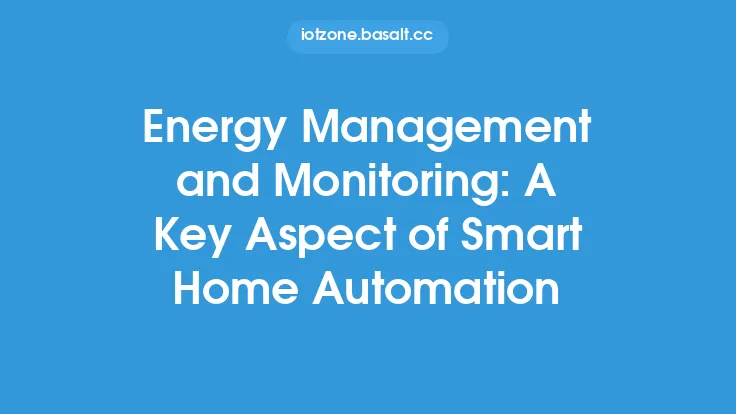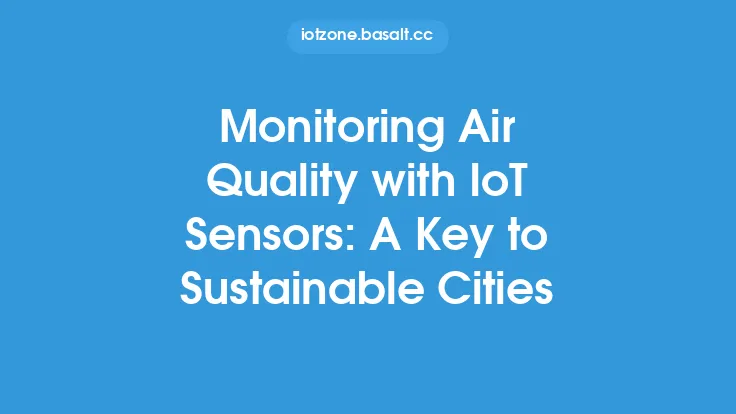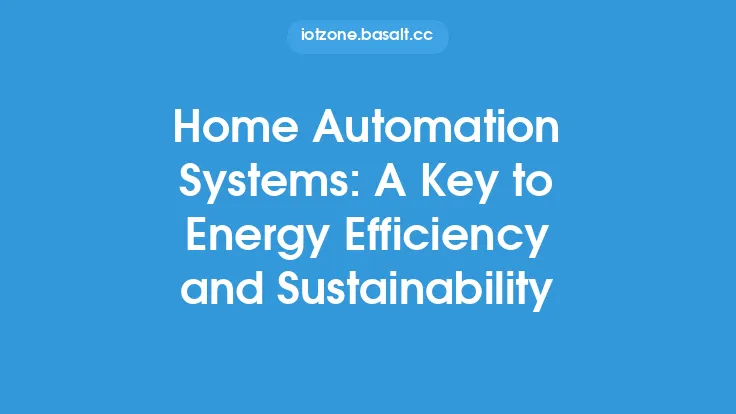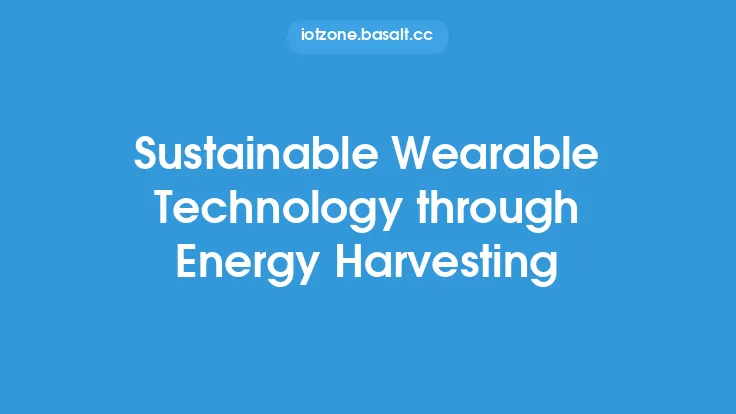The world is witnessing a significant shift towards sustainable development, with a major focus on reducing energy consumption and promoting efficient use of resources. The Internet of Things (IoT) has emerged as a key player in this endeavor, enabling the development of intelligent energy management systems that can optimize energy usage, reduce waste, and promote sustainability. IoT-based energy management involves the use of sensors, actuators, and other devices to monitor and control energy consumption in real-time, providing valuable insights and enabling data-driven decision-making.
Introduction to IoT in Energy Management
IoT in energy management refers to the use of IoT technologies, such as sensors, smart meters, and communication networks, to monitor, control, and optimize energy consumption. This involves the collection of data on energy usage patterns, analysis of the data to identify areas of inefficiency, and implementation of measures to reduce energy waste and promote sustainability. IoT-based energy management systems can be applied in various settings, including industrial, commercial, and residential buildings, as well as in smart cities and grids.
Key Components of IoT-based Energy Management Systems
IoT-based energy management systems typically consist of several key components, including:
- Sensors and Data Loggers: These devices are used to collect data on energy consumption patterns, including temperature, humidity, and energy usage.
- Communication Networks: These networks enable the transmission of data from sensors and data loggers to a central server or cloud-based platform for analysis and processing.
- Data Analytics Software: This software is used to analyze the data collected from sensors and data loggers, providing insights into energy usage patterns and identifying areas of inefficiency.
- Actuators and Control Systems: These systems are used to implement measures to reduce energy waste and promote sustainability, such as adjusting lighting and temperature settings.
- User Interface: This provides a platform for users to monitor energy consumption, receive alerts and notifications, and implement changes to energy usage patterns.
Benefits of IoT-based Energy Management
The benefits of IoT-based energy management are numerous and significant. Some of the key advantages include:
- Energy Efficiency: IoT-based energy management systems can help reduce energy consumption by identifying areas of inefficiency and implementing measures to optimize energy usage.
- Cost Savings: By reducing energy consumption, IoT-based energy management systems can help organizations and individuals save money on energy costs.
- Increased Sustainability: IoT-based energy management systems can help promote sustainability by reducing energy waste and promoting the use of renewable energy sources.
- Improved Maintenance: IoT-based energy management systems can help predict maintenance needs, reducing downtime and improving overall system reliability.
- Enhanced Decision-Making: IoT-based energy management systems provide valuable insights and data, enabling data-driven decision-making and informed choices about energy usage.
Technical Requirements for IoT-based Energy Management
The technical requirements for IoT-based energy management systems are significant and varied. Some of the key technical considerations include:
- Sensor Accuracy and Reliability: Sensors and data loggers must be accurate and reliable to provide high-quality data on energy consumption patterns.
- Communication Network Security: Communication networks must be secure to prevent data breaches and ensure the integrity of the system.
- Data Analytics Software: Data analytics software must be sophisticated and powerful to analyze large datasets and provide valuable insights.
- Actuator and Control System Reliability: Actuators and control systems must be reliable and efficient to implement measures to reduce energy waste and promote sustainability.
- User Interface Design: The user interface must be intuitive and user-friendly to enable users to monitor energy consumption and implement changes to energy usage patterns.
Real-World Applications of IoT-based Energy Management
IoT-based energy management systems have numerous real-world applications, including:
- Industrial Settings: IoT-based energy management systems can be used in industrial settings to optimize energy consumption, reduce waste, and promote sustainability.
- Commercial Buildings: IoT-based energy management systems can be used in commercial buildings to reduce energy consumption, save money, and promote sustainability.
- Residential Settings: IoT-based energy management systems can be used in residential settings to help individuals monitor and control energy consumption, reduce waste, and promote sustainability.
- Smart Cities: IoT-based energy management systems can be used in smart cities to optimize energy consumption, reduce waste, and promote sustainability.
- Renewable Energy Systems: IoT-based energy management systems can be used to monitor and control renewable energy systems, such as solar and wind power, to optimize energy production and reduce waste.
Challenges and Limitations of IoT-based Energy Management
While IoT-based energy management systems offer numerous benefits, there are also several challenges and limitations to consider. Some of the key challenges include:
- High Upfront Costs: IoT-based energy management systems can be expensive to implement, particularly for small organizations or individuals.
- Complexity: IoT-based energy management systems can be complex and difficult to install, configure, and maintain.
- Data Security: IoT-based energy management systems require robust data security measures to prevent data breaches and ensure the integrity of the system.
- Interoperability: IoT-based energy management systems must be able to integrate with existing systems and infrastructure, which can be a challenge.
- Scalability: IoT-based energy management systems must be scalable to accommodate growing energy demands and changing energy usage patterns.
Conclusion
IoT-based energy management systems offer a powerful tool for optimizing energy consumption, reducing waste, and promoting sustainability. By leveraging IoT technologies, such as sensors, smart meters, and communication networks, organizations and individuals can gain valuable insights into energy usage patterns and make data-driven decisions to reduce energy consumption and promote sustainability. While there are challenges and limitations to consider, the benefits of IoT-based energy management systems make them an essential component of any sustainable development strategy. As the world continues to evolve and grow, the importance of IoT-based energy management will only continue to increase, enabling a more sustainable and energy-efficient future for all.





